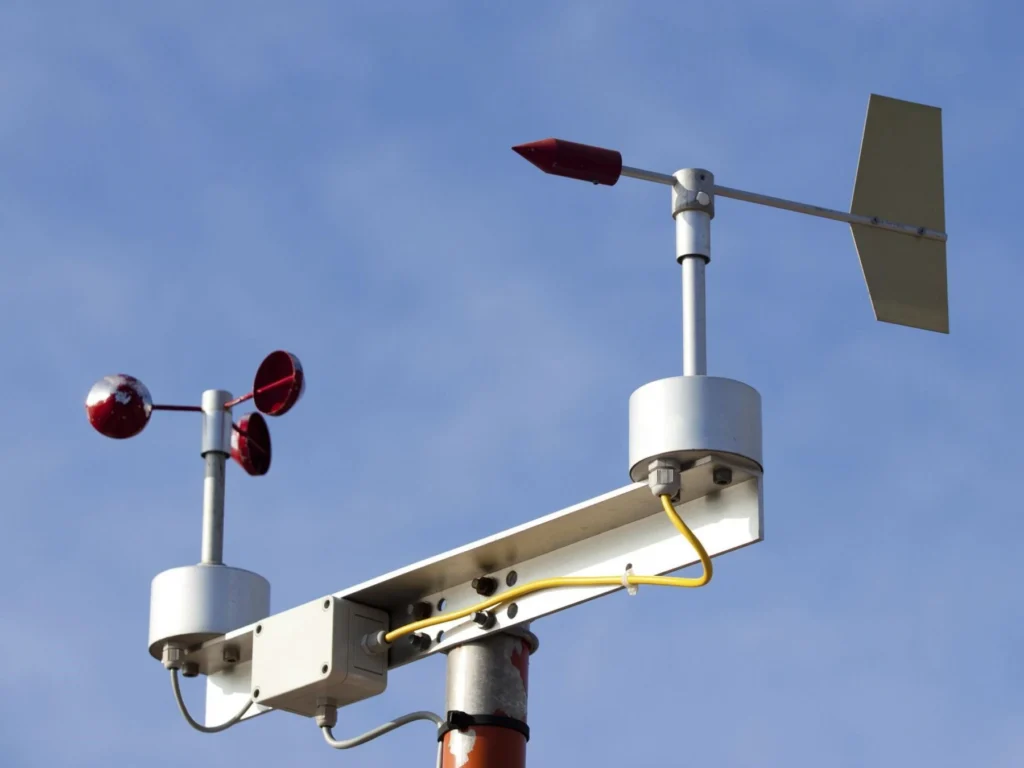
# Wind Measuring Instrument: A Comprehensive Guide to Anemometers and Their Applications
Wind measuring instruments, commonly known as anemometers, are essential tools for accurately measuring wind speed and direction. These devices are widely used in various fields, including meteorology, aviation, marine navigation, and environmental monitoring. This guide will explore the different types of anemometers, their working principles, and their applications.
## Types of Anemometers
There are several types of anemometers, each designed for specific applications and environments. The most common types include:
### 1. Cup Anemometers
Cup anemometers are one of the oldest and most widely used types. They consist of three or four cups mounted on horizontal arms, which rotate when exposed to wind. The rotation speed is proportional to the wind speed, and this data is then converted into a readable format.
### 2. Vane Anemometers
Vane anemometers, also known as windmill anemometers, use a propeller or a set of blades to measure wind speed. The blades rotate in response to the wind, and the rotation speed is measured to determine the wind speed. These anemometers are often used in handheld devices for quick and easy measurements.
### 3. Hot-Wire Anemometers
Hot-wire anemometers measure wind speed by detecting the cooling effect of the wind on a heated wire. As the wind speed increases, the wire cools down, and the change in temperature is used to calculate the wind speed. These anemometers are highly sensitive and are often used in research and laboratory settings.
### 4. Ultrasonic Anemometers
Ultrasonic anemometers use ultrasonic sound waves to measure wind speed and direction. They consist of multiple pairs of transducers that send and receive sound waves. The time it takes for the sound waves to travel between the transducers is affected by the wind, and this data is used to calculate wind speed and direction. These anemometers are highly accurate and are often used in weather stations and aviation.
## Applications of Anemometers
Anemometers have a wide range of applications across various industries. Some of the most common uses include:
### 1. Meteorology
In meteorology, anemometers are used to measure wind speed and direction, which are critical parameters for weather forecasting. Accurate wind measurements help meteorologists predict weather patterns, storms, and other atmospheric phenomena.
### 2. Aviation
In aviation, anemometers are used to measure wind speed and direction at airports and on aircraft. This information is crucial for safe takeoffs, landings, and in-flight navigation. Pilots rely on accurate wind data to make informed decisions and ensure the safety of passengers and crew.
### 3. Marine Navigation
Anemometers are also used in marine navigation to measure wind speed and direction over water. This information is essential for sailors and ship captains to navigate safely and efficiently. Wind data helps in planning routes, avoiding storms, and optimizing sail settings.
### 4. Environmental Monitoring
In environmental monitoring, anemometers are used to measure wind patterns and their impact on air quality, pollution dispersion, and climate change. Accurate wind data is essential for understanding and mitigating the effects of environmental factors on ecosystems and human health.
## Conclusion
Anemometers are indispensable tools for measuring wind speed and direction in various applications. From meteorology to aviation, marine navigation, and environmental monitoring, these devices play a crucial role in ensuring safety, efficiency, and accuracy. Understanding the different types of anemometers and their applications can help you choose the right instrument for your specific needs. Whether you’re a meteorologist, pilot, sailor, or environmental scientist, an anemometer is a valuable tool that can provide critical data for your work.
Keyword: wind measuring instrument
